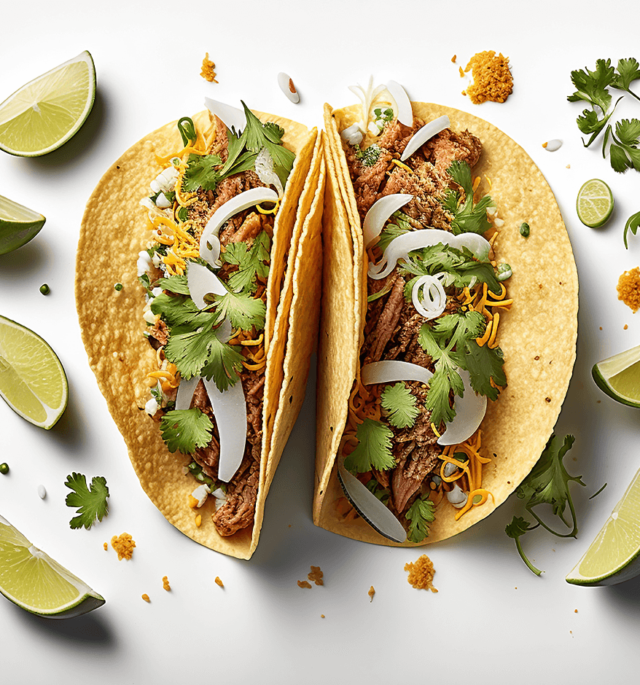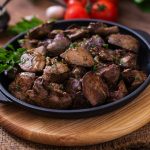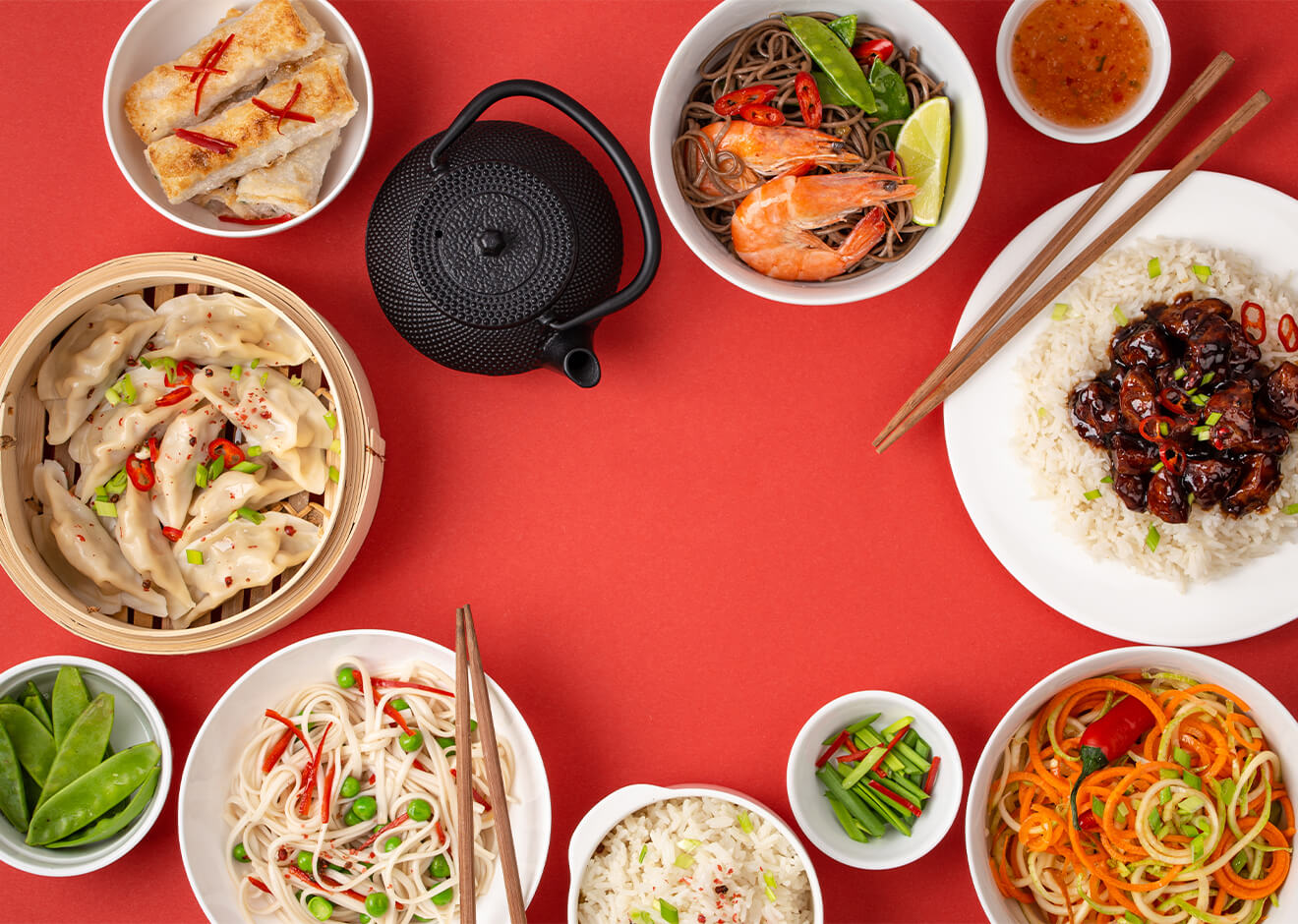
Table of Contents
Welcome, food enthusiasts, to a tantalizing adventure through the diverse and vibrant world of Chinese cuisine. Prepare to embark on a culinary journey that spans thousands of years, uncovering the secrets of China’s rich gastronomic heritage. From the bustling street stalls of Shanghai to the elegant banquet halls of Beijing, each region offers its own unique culinary delights, reflecting the country’s vast geography, history, and cultural diversity. In this comprehensive blog post, we invite you to join us as we explore and rank the top 15 most popular Chinese dishes.
Chinese cuisine is a symphony of flavors, textures, and colors, carefully orchestrated to create unforgettable dining experiences. It is a celebration of the harmony between ingredients, the balance of yin and yang, and the art of capturing the essence of nature on a plate. Whether it’s the fiery spices of Sichuan, the delicate flavors of Cantonese cuisine, or the intricate dim sum creations, every dish tells a story, intertwining tradition, innovation, and the wisdom of generations. From beloved classics that have stood the test of time to contemporary interpretations that push culinary boundaries, we will delve into the nuances of each dish, unravelling the techniques, ingredients, and cultural significance that make them so cherished.
So, fasten your seatbelts and prepare for a culinary odyssey that will awaken your senses and deepen your appreciation for the artistry of Chinese cuisine. As we journey through the top 15 most popular Chinese dishes, you’ll discover the soul of China, one bite at a time. Get ready to embark on a flavorful expedition that will leave you craving more and inspire you to explore the wonders of Chinese cuisine in your own kitchen. Join us as we celebrate the captivating flavors, the rich history, and the boundless creativity of Chinese culinary traditions. Let the adventure begin!
Peking Duck (Beijing Kaoya)
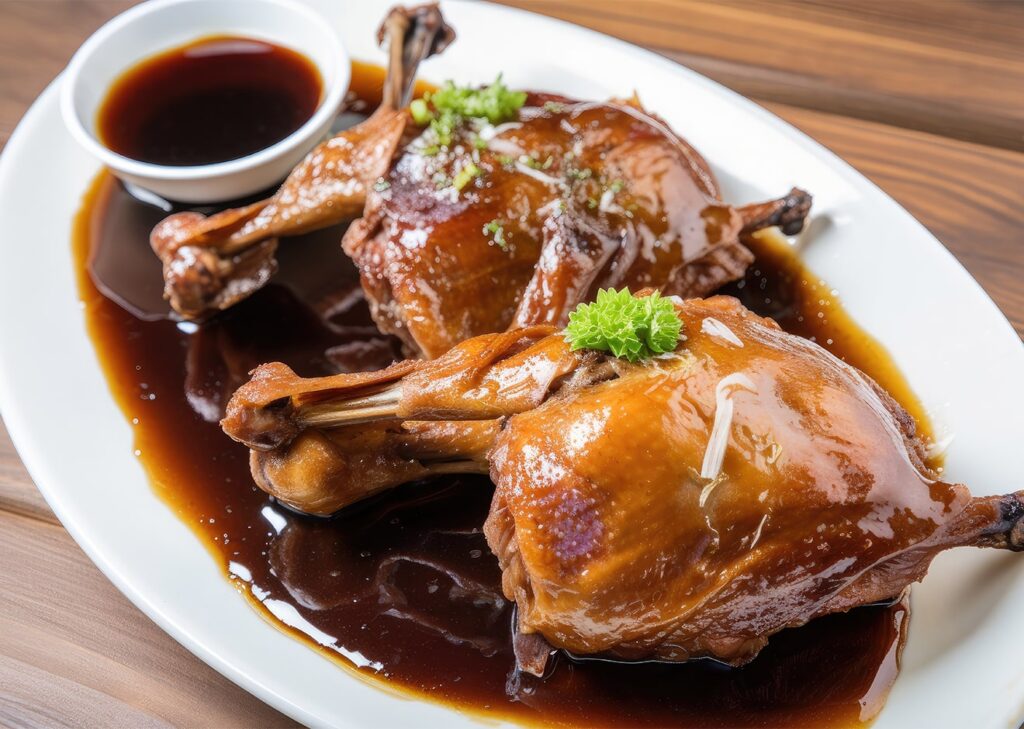
Peking Duck, also known as Beijing Kaoya, stands as a shining star among the culinary gems of Chinese cuisine. With a history dating back centuries, this iconic dish has captivated the palates of food lovers worldwide. Peking Duck is a true testament to the artistry and meticulousness of Chinese culinary traditions.
Beyond its exceptional flavors, Peking Duck carries a significant cultural significance in Chinese culinary heritage. It is often featured in grand banquets and celebratory feasts, symbolizing prosperity, abundance, and unity. The process of carving and sharing the duck at the table fosters a sense of togetherness and communal enjoyment.
Kung Pao Chicken

Kung Pao Chicken, a fiery and beloved stir-fried dish that hails from the Sichuan province, is a true testament to the bold and vibrant flavors of Sichuan cuisine. With its perfect balance of spiciness, tanginess, and sweetness, Kung Pao Chicken has won the hearts of food enthusiasts around the world.
Whether you’re a fan of spicy food or simply crave bold and exciting flavors, Kung Pao Chicken is sure to satisfy your taste buds and leave you craving for more. It is a testament to the ingenuity and creativity of Chinese cuisine, where humble ingredients are transformed into a culinary masterpiece that leaves a lasting impression. So, dare to venture into the realm of Sichuan flavors and savor the unforgettable experience that is Kung Pao Chicken.
Mapo Tofu

As the dish is prepared, the rich aroma of Mapo Tofu wafts through the air, enticing taste buds and beckoning adventurous eaters to embark on a culinary journey. The silken tofu, velvety and delicate, serves as the perfect canvas for the bold flavors that lie ahead.
The sauce, a symphony of spices, brings together the fiery allure of chili bean paste, the earthiness of fermented black beans, and the depth of aromatic garlic and ginger. This complex medley of ingredients blends harmoniously, creating a robust and captivating flavor profile that ignites the palate.
Mapo Tofu is more than just a dish; it is a celebration of the audacious and spirited nature of Sichuan cuisine. It embodies the region’s reputation for bold flavors, intricate spice combinations, and a willingness to push boundaries. With each bite, you become part of a culinary tradition that has delighted palates for generations, and you find yourself yearning for more, unable to resist the allure of its addictive charm.
Dim Sum
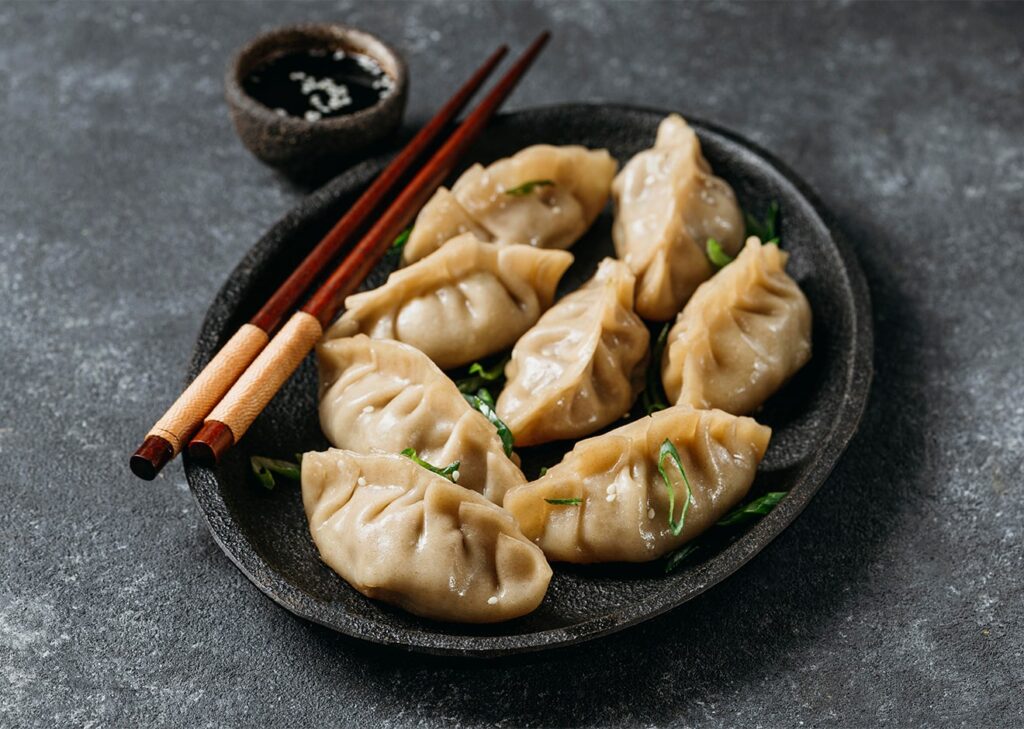
Each bite of Dim Sum offers a tantalizing experience for the senses, showcasing the rich diversity of Chinese cuisine. Steamed dumplings, known as “jiaozi” or “shumai,” are filled with a delectable mixture of minced meat, vegetables, and fragrant spices, resulting in a burst of savory goodness with each bite. The delicate rice rolls, known as “cheong fun,” are made from a thin layer of rice flour batter, which is then rolled up with various fillings such as barbecued pork, shrimp, or vegetables, creating a harmonious combination of softness and crunch.
Another Dim Sum favorite is the fluffy and slightly sweet steamed buns, commonly known as “bao.” These pillowy delights can be filled with an array of fillings, from succulent barbecued pork, known as “char siu,” to savory combinations of vegetables, mushrooms, or even custard for those with a sweet tooth. The soft, fluffy texture of the buns, coupled with the contrasting flavors of the fillings, makes each bite an explosion of taste and satisfaction.
Gong Bao (Kung Pao) Shrimp
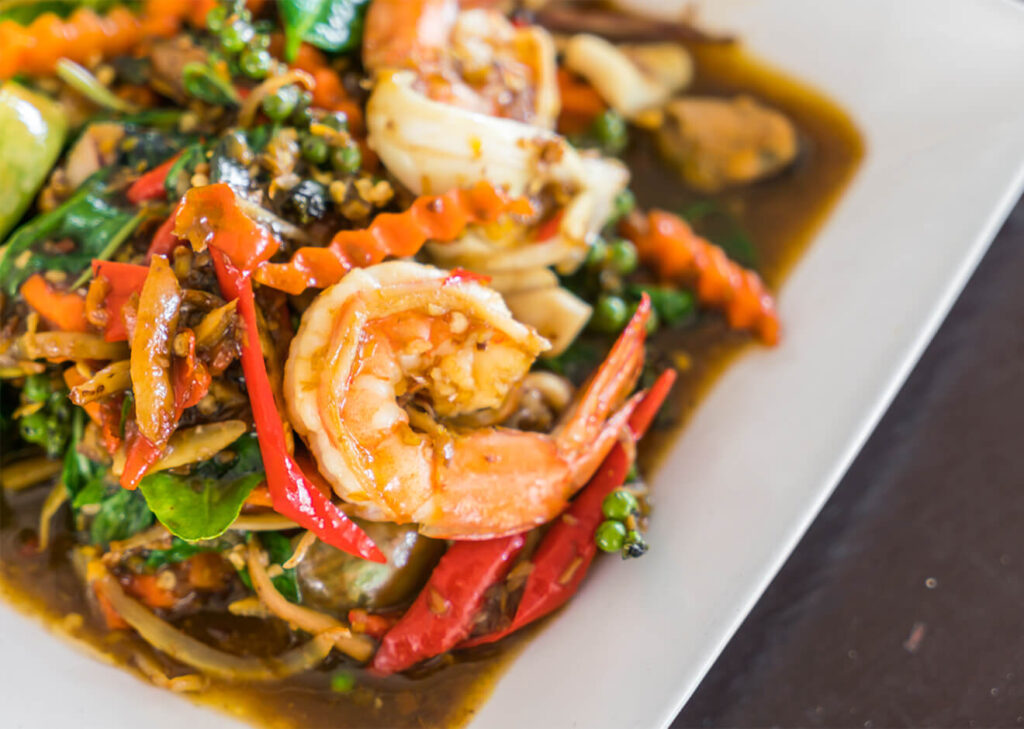
Gong Bao, also known as Kung Pao Shrimp, is a popular dish originating from the Sichuan province of China. Renowned for its bold and fiery flavors, Sichuan cuisine is characterized by its generous use of aromatic spices and chili peppers, creating a delightful culinary experience. Gong Bao Shrimp perfectly embodies the essence of Sichuan cooking, featuring succulent shrimp that are stir-fried to perfection alongside a medley of vibrant ingredients.
Its addictive flavors and enticing aroma make it a popular choice for those seeking a memorable culinary adventure. So next time you crave a dish that showcases the rich heritage and vibrant flavors of Sichuan, indulge in the irresistible allure of Gong Bao Shrimp, and let your taste buds embark on a journey to the captivating province of Sichuan, China.
Ma Po Eggplant
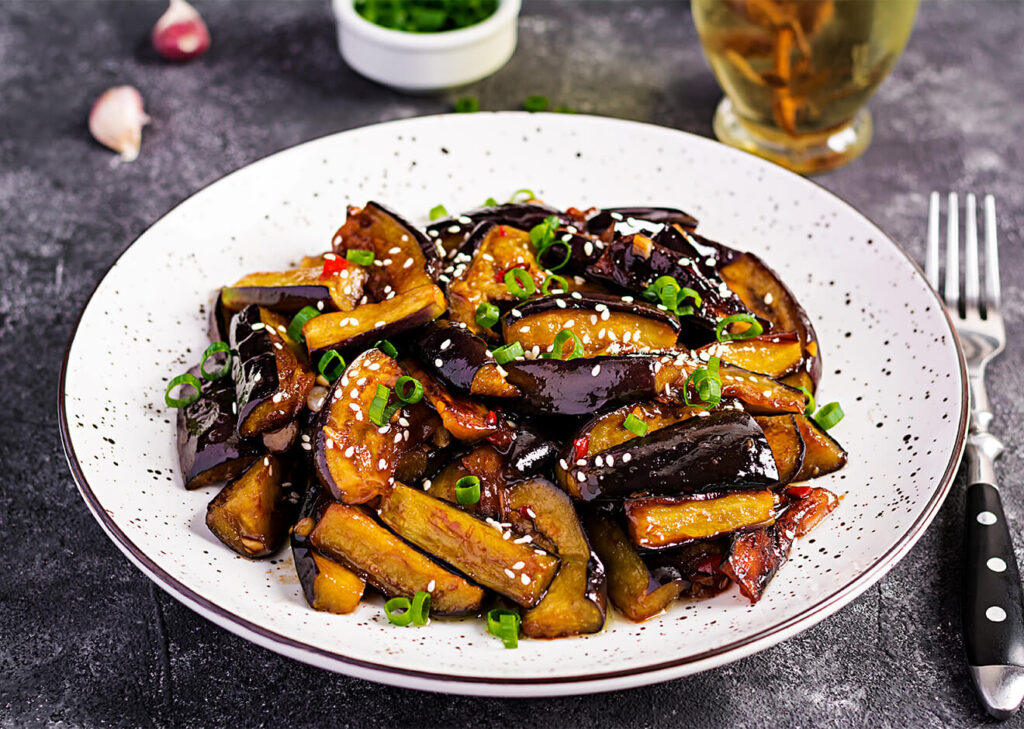
The key to a delicious Ma Po Eggplant lies in the careful balance of ingredients and the skillful execution of cooking techniques. The eggplant is the star of the dish, with its silky and melt-in-your-mouth texture that absorbs the flavors of the sauce. It’s important to select fresh, firm eggplants and cut them into bite-sized pieces for even cooking.
The sauce is what sets Ma Po Eggplant apart, infusing the dish with its distinctively bold and spicy profile. Sichuan peppercorns, known for their numbing and citrusy flavor, are a crucial component of the sauce. These tiny seeds add a unique tingling sensation to the palate, enhancing the overall taste experience. Combined with spicy chili bean paste, soy sauce, and a touch of vinegar, the sauce creates a complex and deeply satisfying flavor.
Hot Pot (Huo Guo)
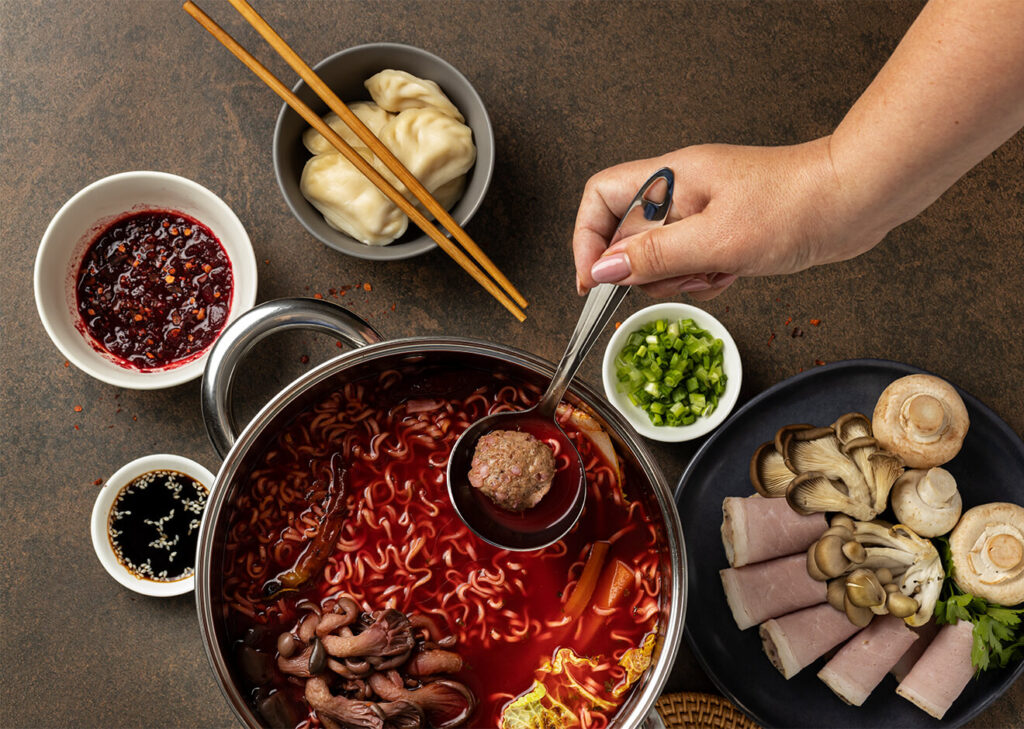
In recent years, Hot Pot has gained popularity not only in China but also in various parts of the world. Its unique combination of social interaction and delicious flavors has captured the hearts and taste buds of people from diverse cultural backgrounds.
One of the appealing aspects of Hot Pot is its versatility. There are numerous variations of broths and dipping sauces, allowing diners to customize their dining experience according to their preferences. The broth can range from mild and comforting to spicy and fiery, catering to different spice levels and tastes. Some popular broth flavors include spicy Sichuan, herbal, mushroom, and seafood-based broths. Each type of broth imparts its distinct character to the ingredients, elevating the overall dining experience.
Xiaolongbao (Soup Dumplings)
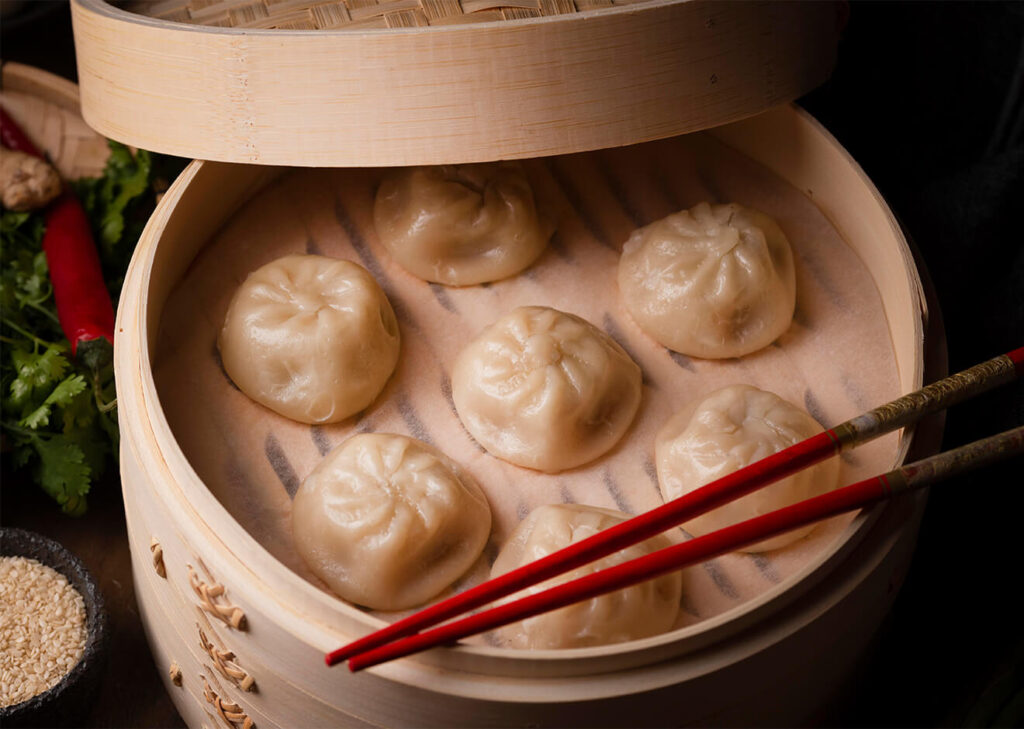
The art of making Xiaolongbao requires a meticulous attention to detail and years of practice to perfect the folding technique. Skilled dumpling makers carefully measure and knead the dough to achieve the ideal consistency, ensuring that it is thin enough to allow the soup to penetrate without tearing, yet sturdy enough to hold the filling.
The interplay of textures, from the tender dough to the juicy filling and the burst of soup, creates a delightful explosion of flavors in your mouth. The careful craftsmanship and attention to detail that goes into making Xiaolongbao make it a revered dish, not just in its place of origin, Shanghai, but also worldwide.
Cantonese Roast Duck
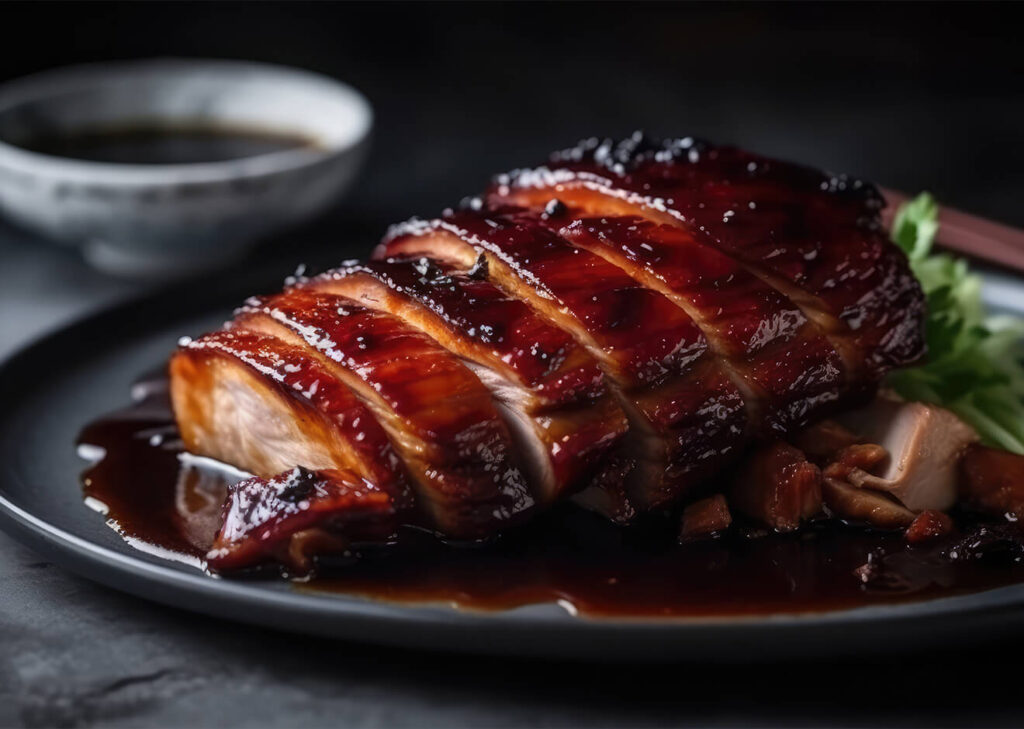
The process of preparing Cantonese Roast Duck is an art form that requires precision and expertise. First, the duck is thoroughly cleaned and then marinated for several hours, allowing the flavors to penetrate the meat. The combination of star anise, cloves, and soy sauce infuses the duck with a rich and aromatic taste.
Cantonese Roast Duck has become an iconic dish, not only in the Guangdong province where it originated but also in Cantonese restaurants worldwide. Its unique blend of flavors, meticulous preparation, and stunning presentation continue to captivate food lovers and showcase the culinary excellence of Cantonese cuisine. Whether enjoyed at a lavish banquet or a humble family meal, Cantonese Roast Duck is a true culinary masterpiece that embodies the essence of Chinese gastronomy.
General Tso’s Chicken
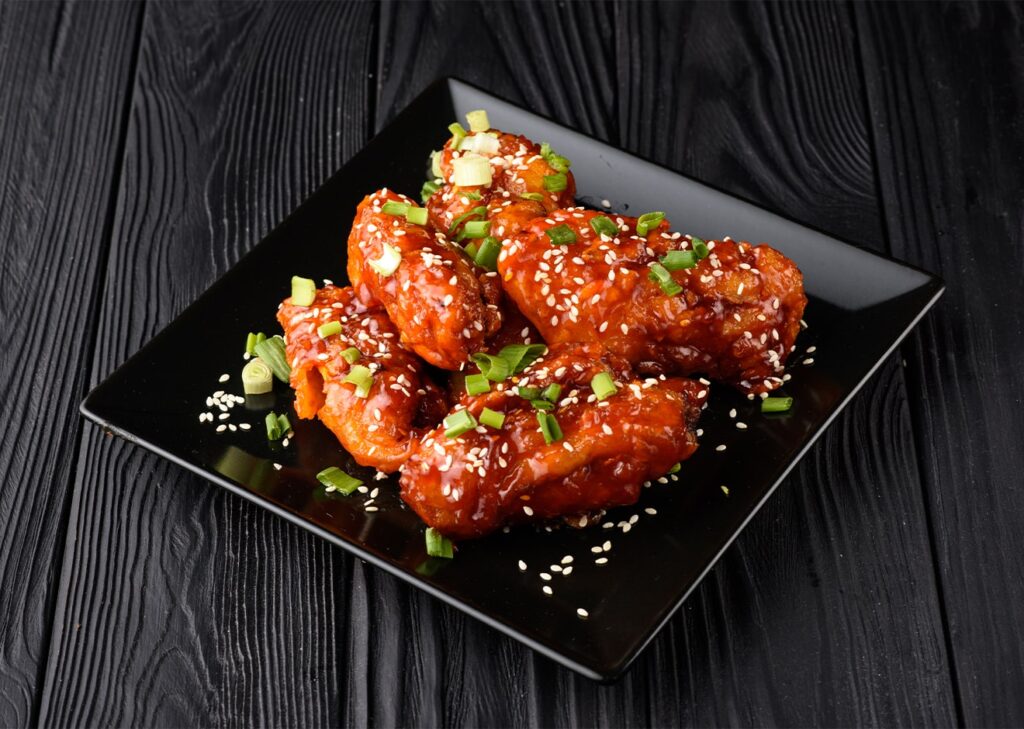
This dish has an interesting history behind its creation. Despite its association with Chinese-American cuisine, General Tso’s Chicken is not actually a traditional Chinese dish. Its origins can be traced back to the mid-20th century in the United States, specifically in Chinese restaurants in New York City.
The dish is named after General Tso Tsung-tang, a Chinese military leader from the Qing dynasty. However, there is no evidence to suggest that General Tso had any connection to the recipe or that he even enjoyed the flavors of this particular dish. The name was likely chosen to give the dish an air of authenticity and to attract attention.
The creation of General Tso’s Chicken is credited to a chef named Peng Chang-kuei, who was born in Hunan province, China. Peng moved to the United States and opened a restaurant in New York City in the 1970s. To cater to the American palate, he adapted traditional Hunanese flavors and cooking techniques to create a dish that would be appealing to the local customers.
Peng’s General Tso’s Chicken quickly gained popularity and became a staple in Chinese-American cuisine. The combination of crispy chicken, flavorful sauce, and a balance of sweet and tangy flavors struck a chord with diners across the country. The dish’s success led to its widespread adoption in Chinese restaurants throughout the United States, and it eventually became an iconic symbol of Chinese-American culinary fusion.
Sweet and Sour Pork

Sweet and Sour Pork, also known as “Gu Lao Rou” in Mandarin, is indeed a beloved classic in Chinese cuisine that has captivated taste buds around the globe. This iconic dish showcases the artful blend of contrasting flavors and textures that are synonymous with Chinese culinary traditions.
The origins of Sweet and Sour Pork can be traced back to the Guangdong province in southern China, where it was originally developed as a local specialty. The dish gained popularity during the 18th century and eventually spread throughout China, finding its way onto the menus of restaurants both big and small.
The key element that sets Sweet and Sour Pork apart is its distinctive sauce. The sauce is a carefully crafted balance of sweet and tangy flavors, achieved by combining vinegar, sugar, ketchup, and soy sauce. This unique blend of ingredients creates a complex taste profile that dances on the palate, leaving a delightful impression.
Dan Dan Noodles
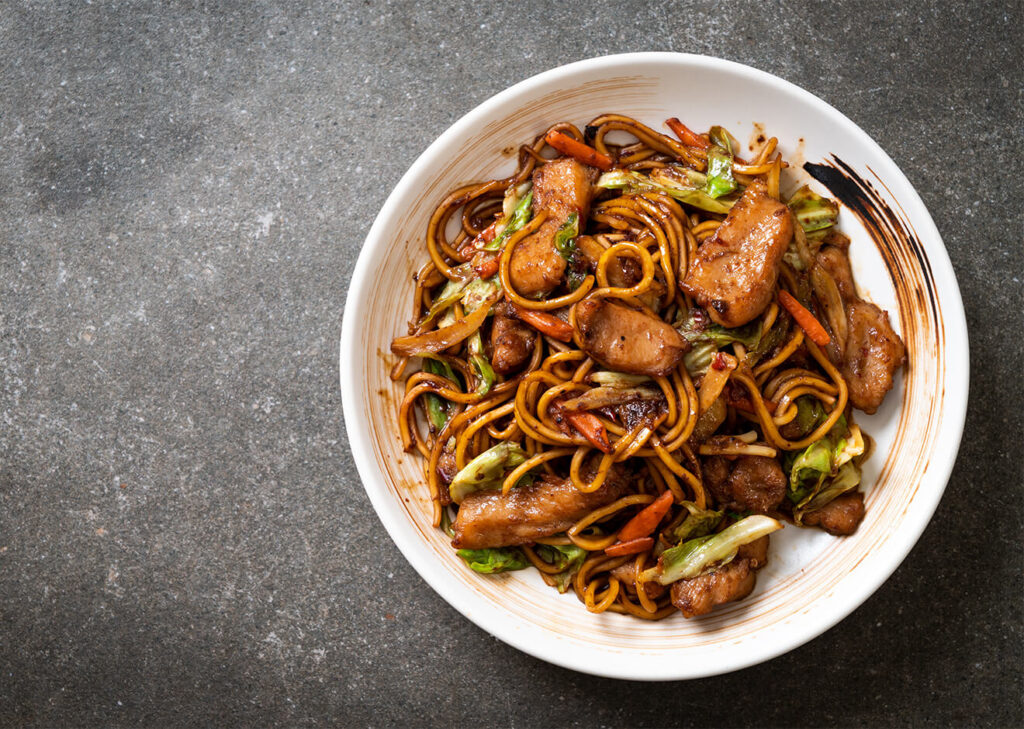
These mouthwatering noodles have gained popularity not only in China but also around the world, as their unique combination of ingredients and flavors captivates the taste buds of food lovers everywhere. The name “Dan Dan” actually comes from the carrying pole (dan dan) that street vendors used to carry the noodles and other ingredients to sell on the streets of Chengdu, the capital of Sichuan province.
One of the key elements that sets Dan Dan Noodles apart is the use of Sichuan peppercorns, which provide a distinctive numbing and tingling sensation known as “mala.” This sensation, combined with the fiery heat from the chili oil, creates a tantalizing and addictive flavor profile that keeps people coming back for more. The minced pork adds a rich and meaty component to the dish, while the preserved vegetables offer a tangy and slightly sour note that balances out the spiciness.
Yangzhou Fried Rice
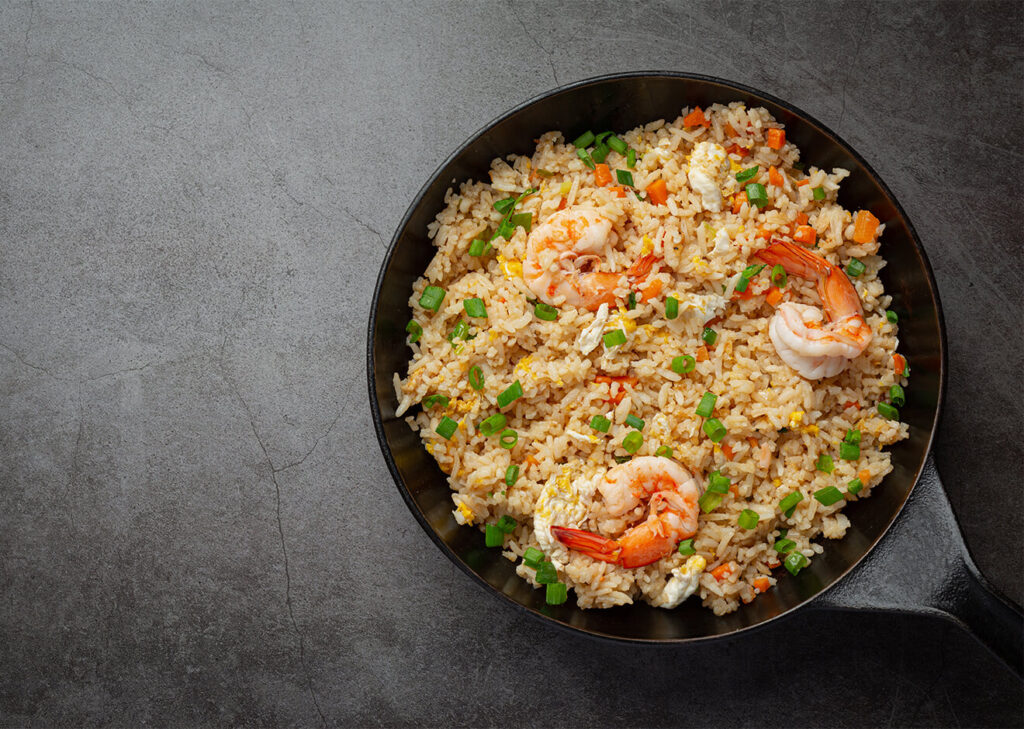
The origins of Yangzhou Fried Rice can be traced back to the city of Yangzhou, a historical and cultural hub in Jiangsu province, China. With its rich culinary heritage, Yangzhou has long been celebrated for its exquisite and diverse regional cuisine. Yangzhou Fried Rice is a shining example of the culinary expertise that has made the city famous.
The dish itself is a delightful medley of flavors and textures, carefully crafted to create a harmonious balance. The fluffy rice serves as the foundation, acting as a canvas for the vibrant colors and enticing aromas that the ingredients bring. The diced ham adds a salty and smoky note, while the succulent shrimp provides a touch of sweetness and a hint of the sea. The scrambled eggs lend a velvety texture and richness, while the green peas bring a burst of freshness. The scallions, with their mild onion flavor, provide a subtle yet distinctive aromatic element.
Ma La Xiang Guo (Spicy Numbing Stir-Fry)

Ma La Xiang Guo, has gained immense popularity not only in China but also worldwide, captivating adventurous food enthusiasts with its bold and explosive flavors. Its name itself reflects its defining characteristics. “Ma” refers to the numbing sensation caused by Sichuan peppercorns, while “La” signifies the fiery spiciness derived from the chili peppers.
The secret to Ma La Xiang Guo lies in the careful selection and preparation of ingredients. A typical Ma La Xiang Guo platter brims with an assortment of fresh produce like leafy greens, mushrooms, bell peppers, bean sprouts, and various root vegetables. Alongside these vegetables, you’ll find an array of proteins to choose from, including chicken, beef, pork, shrimp, and even exotic options like frog or rabbit. The wide variety of ingredients ensures a delightful medley of textures and flavors in every mouthful.
Char Siu (Chinese BBQ Pork)
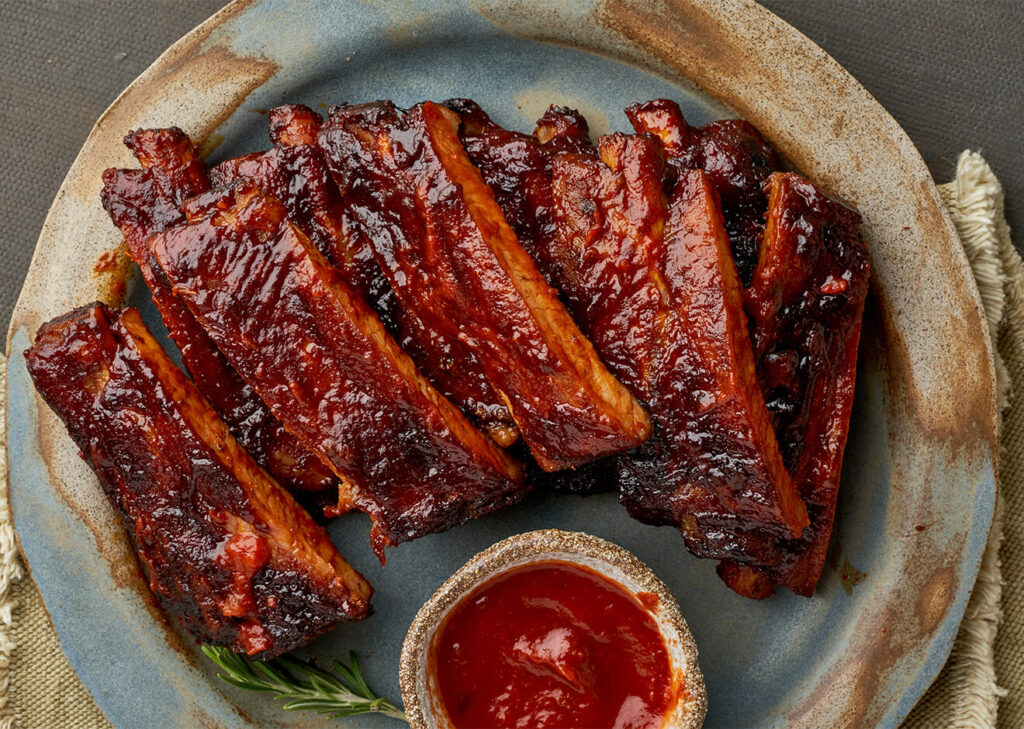
The origins of Char Siu can be traced back to ancient China, where it was traditionally prepared by roasting whole cuts of pork over an open fire. Over time, the recipe evolved, and today it is commonly made using pork shoulder or pork belly, which are both known for their juicy and flavorful qualities.
Char Siu is a versatile dish that can be enjoyed in various ways. It is often served as a main course, either on its own or accompanied by steamed rice and vegetables. In Cantonese cuisine, it is also a popular filling for steamed buns, known as Char Siu Bao, which are a delightful combination of fluffy dough and flavorful pork. Additionally, Char Siu can be sliced and added to stir-fries, fried rice, or noodle dishes, bringing its distinctive taste to a wide range of culinary creations.
Chinese cuisine is a true treasure trove, offering an endless array of culinary delights that can satisfy every palate. The top 15 Chinese dishes mentioned in the blog post only scratch the surface of this vast and diverse culinary landscape. It’s a cuisine that spans thousands of years and encompasses a multitude of regional variations, each with its own unique flavors and cooking techniques.
Chinese cuisine is not only about the taste but also the artistry behind each creation. The delicate knife skills displayed in intricate vegetable carvings, the precise folding of dumplings, and the meticulous arrangement of ingredients in a stir-fry all showcase the craftsmanship and attention to detail that make Chinese cuisine a true culinary art form.
So, whether you’re a fan of spicy, savory, sweet, or tangy flavors, the culinary adventure through China promises to satisfy every craving. Take the time to explore the vast and diverse Chinese culinary landscape, try new flavors, and let the artistry and flavors of China transport you to a realm of gastronomic bliss. Enjoy the adventure, and may your taste buds be forever captivated by the wonders of Chinese cuisine!
- February 20, 2024
- 13 Min Read
Take a culinary voyage through French cuisine and discover the best French food that appeals to foodies around the world.
- July 18, 2023
- 25 Min Read
Discover the Most Popular Mexican Dishes with our savory guide! Bursting with flavor, these delectable meals guarantee a culinary fiesta.

